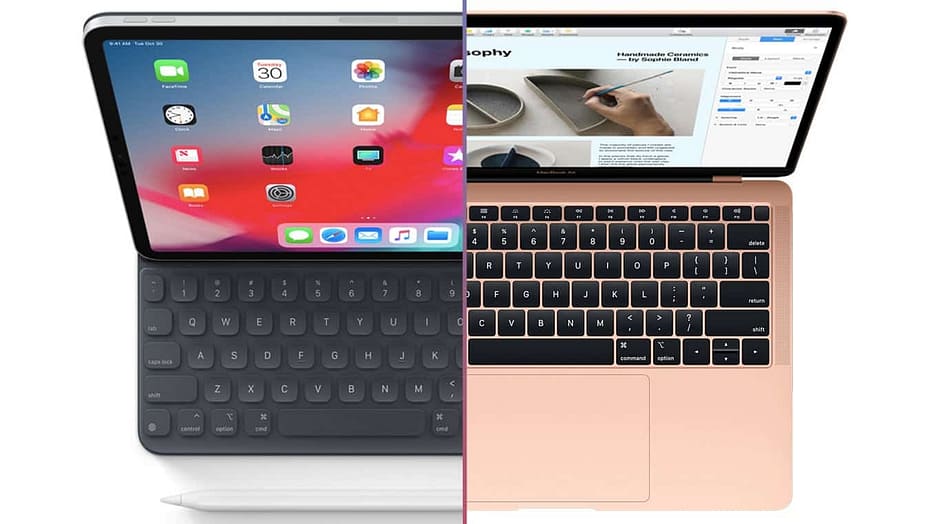Key Takeaway: Despite a stagnant year in 2023, with no new iPad releases, Apple’s upcoming event promises new innovations. However, the challenge lies not in the hardware’s capabilities but in defining the iPad’s evolving purpose.
The iPad’s journey has been a rollercoaster of excitement and anticipation since its inception. From the early days of long lines outside stores to the recent dilemma of its identity crisis, the iPad has traversed various phases in the tech landscape. Let’s delve into its past, present, and potential future to understand its role in our digital lives.
The Rise of the iPad: A Bridge Between Devices
In its infancy, the iPad captured hearts with its promise of bridging the gap between smartphones and computers. It offered a larger canvas for productivity and entertainment, catering to a diverse audience. The iPad Mini further amplified its appeal with its compact design, making it a beloved companion for leisure activities.
The Quest for Power and Purpose: The iPad Pro Era
With the introduction of the iPad Pro in 2015, Apple aimed to redefine the iPad as a legitimate laptop replacement. The sleek design, impressive performance, and accessories like the Magic Keyboard hinted at a future where the iPad could serve as a primary computing device. However, despite strides in hardware and software enhancements, the iPad faced stiff competition from its own ecosystem.
The Rise of Apple Silicon and the Shift in Momentum
The launch of Apple Silicon Macs in late 2020 disrupted the narrative surrounding the iPad’s role. Suddenly, consumers had access to powerful MacBook models with the same architecture as the iPad, but with the added benefits of a desktop operating system and ample ports. This shift challenged the iPad’s position as a versatile computing device, leading to a reassessment of its purpose in the market.
Navigating the Crossroads: Reimagining the iPad’s Future
As Apple prepares to unveil new iPad models, the focus must extend beyond incremental hardware upgrades. The true essence lies in redefining the iPad’s purpose in a rapidly evolving tech landscape. Whether it’s doubling down on creativity with enhanced Apple Pencil capabilities, bolstering productivity with seamless multitasking features, or reimagining the iPadOS experience for a more intuitive user interface, innovation is key to revitalizing the iPad’s relevance.
With a plethora of options available on Apple’s website, navigating the iPad lineup can feel like wandering through a tech labyrinth. Let’s unravel the complexities and examine each model’s offerings, from the budget-friendly to the premium powerhouse.
The 9th Gen iPad: A Testament to Timelessness
- Design: Sporting a classic design, the 9th Gen iPad remains a stalwart in Apple’s lineup.
- Price: Priced at $330, it offers an affordable entry point into the iPad ecosystem.
- Performance: Surprisingly snappy performance makes it a viable option for everyday tasks.
The 10th Gen iPad: Modernity at a Premium
- Design: With a more modern aesthetic, the 10th Gen iPad commands a higher price tag.
- Price: Costing over $100 more than its predecessor, it appeals to those seeking a contemporary design.
- Features: While boasting enhanced features, the real-world difference may not justify the price jump for most users.
The iPad Air: Striking a Balance Between Power and Price
- Positioning: Positioned between the base iPad and the Pro models, the iPad Air offers a balance of performance and affordability.
- Price: Falling within the mid-range spectrum, it caters to users seeking a blend of power and value.
- Features: With improved specifications, it targets users with higher demands without breaking the bank.
The iPad Mini: Compact Yet Costly
- Size: Despite its diminutive size, the iPad Mini commands a higher price point compared to its larger counterparts.
- Price: Surprisingly expensive, it caters to users prioritizing portability over screen size.
- Utility: Its smaller form factor may appeal to niche audiences, but its price may deter budget-conscious buyers.
The iPad Pro: Pushing the Boundaries of Price and Performance
- Flagship Model: Positioned as Apple’s premium offering, the iPad Pro boasts top-of-the-line specifications and features.
- Price: Starting at $1,100, it targets professionals and power users willing to invest in cutting-edge technology.
- Accessories: Additional costs for accessories like the Magic Keyboard and Apple Pencil significantly inflate the total expenditure.
- Value Proposition: While undeniably powerful, the iPad Pro’s exorbitant price raises questions about its value compared to traditional laptops.
Accessories: A Mixed Bag of Convenience and Confusion
- Apple Pencil: The sleek second-generation Apple Pencil offers seamless integration and functionality but comes at a premium.
- Compatibility: The first-generation Apple Pencil and the USB-C variant add layers of complexity, creating confusion for consumers.
- Accessory Costs: Additional expenses for accessories further compound the overall cost of owning an iPad, adding to the financial burden.
In the ongoing debate between the iPad and the MacBook, both sides offer compelling arguments, leaving consumers at a crossroads when deciding which device best suits their needs. Let’s explore the factors that influence this decision and delve into the nuances of each platform.
The Power of Longevity: Why Upgrade?
- Impressive Hardware: The iPad boasts formidable hardware capabilities, ensuring longevity and reliability over several years.
- Reduced Upgrade Urgency: The diminishing need for frequent upgrades stems from the iPad’s ability to perform basic tasks efficiently even on older models.
- Professional Apps: Newer iPads support professional apps like DaVinci Resolve and Final Cut Pro, enticing users to consider them for serious work.
The MacBook Dilemma: Why Not Choose a Laptop?
- Software Superiority: Despite the iPad’s compatibility with professional apps, the MacBook offers a superior software experience for tasks like video editing and graphic design.
- Unhindered Performance: MacOS provides a more seamless environment for resource-intensive applications, minimizing frustrations caused by iPadOS limitations.
- Professional Workflows: For users engaged in demanding tasks, the MacBook remains the preferred choice due to its desktop-class functionality and efficiency.
Apple’s Conundrum: Balancing Innovation and Identity
- The iPad’s Identity Crisis: The iPad’s versatility blurs the lines between casual use and professional work, leaving Apple in a conundrum regarding its role in the market.
- Target Audience: While the iPad caters to specific demographics such as graphic designers who leverage the Apple Pencil, its appeal to the broader consumer base remains ambiguous.
- Path Forward: Apple faces the challenge of either further integrating iPadOS with MacOS to deliver desktop-class functionality or redefining the iPad’s purpose entirely to align with specific user needs.
As the iPad navigates its future within the Apple ecosystem, it faces a myriad of challenges and opportunities. Reflecting on its evolution and contemplating its trajectory, let’s explore avenues for improvement and envision a path forward that aligns with user expectations and preferences.
Embracing the Evolution: Recognizing Progress and Limitations
- Progressive Advancements: Over the years, the iPad has undergone significant improvements, catering to a wide range of user needs with features like professional apps and trackpad support.
- Persistent Challenges: Despite strides in functionality, the iPad grapples with inherent limitations, hindering its ability to seamlessly replace traditional computers for power users.
Seeking Feedback: Tim Cook’s Call to Action
- Engaging the Community: In a hypothetical scenario where Tim Cook seeks feedback on enhancing the iPad experience, users are invited to share their perspectives on how the device can be improved.
- Acknowledging Achievements: While the iPad has made remarkable strides, users may highlight persistent challenges such as software limitations and workflow complexities.
Personal Perspectives: Navigating the iPad’s Utility
- Varied Experiences: Users’ experiences with the iPad vary based on individual workflows and preferences. While some find it to be a versatile tool for everyday tasks, others encounter frustrations with its limitations.
- Optimizing Workflow: For content creators and professionals, the iPad’s utility may be augmented with accessories like keyboards and trackpads. However, the transition from traditional computers may pose challenges.
Glimpses of Greatness: Balancing Potential with Reality
- App Optimizations: Optimized apps designed specifically for the iPad offer glimpses of its potential as a transformative productivity tool.
- Navigating Limitations: Despite its strengths, users may encounter hurdles such as file management complexities and suboptimal window management, impacting productivity and workflow efficiency.
The Way Forward: Striking a Balance Between Promise and Practicality
- Clear Messaging: Apple must refine its messaging to delineate the distinct roles of the iPad and MacBook, providing clarity for users navigating the crowded product lineup.
- Focus and Innovation: Embracing the iPad’s strengths while addressing its limitations requires a concerted effort to innovate and refine the user experience, ensuring that each device serves a distinct purpose within the ecosystem.
- User-Centric Approach: Prioritizing user feedback and aligning product development with user needs will be paramount in shaping the future of the iPad, fostering a symbiotic relationship between technology and human-centric design.
Conclusion: A Journey of Continual Evolution
As the iPad embarks on its journey into the future, it faces both challenges and opportunities for growth and refinement. By leveraging user feedback, embracing innovation, and refining its identity within the Apple ecosystem, the iPad can continue to evolve as a versatile and indispensable tool for users around the world. Ultimately, the key lies in striking a delicate balance between promise and practicality, ensuring that the iPad remains at the forefront of innovation while staying true to its core principles of simplicity, versatility, and functionality.















